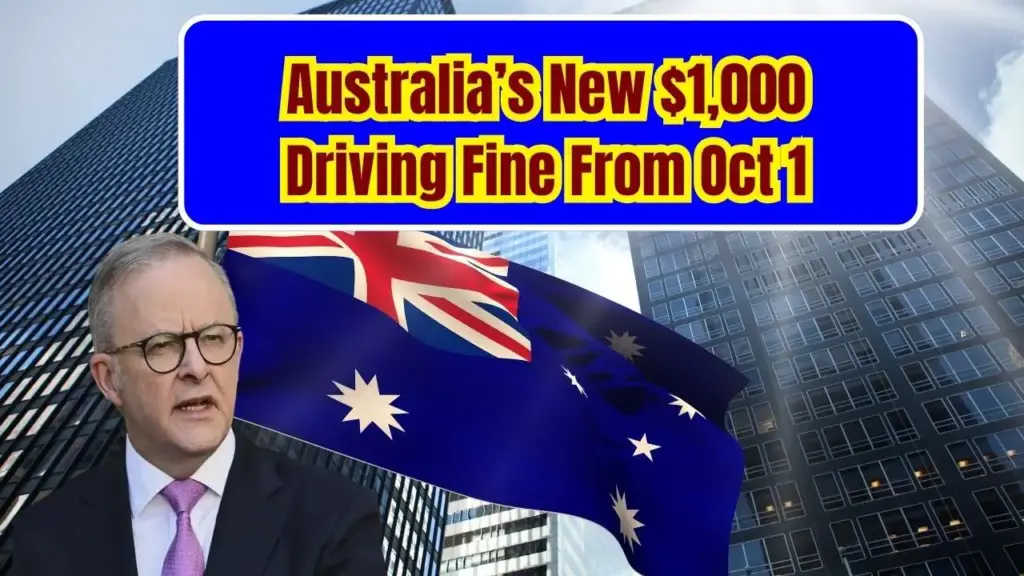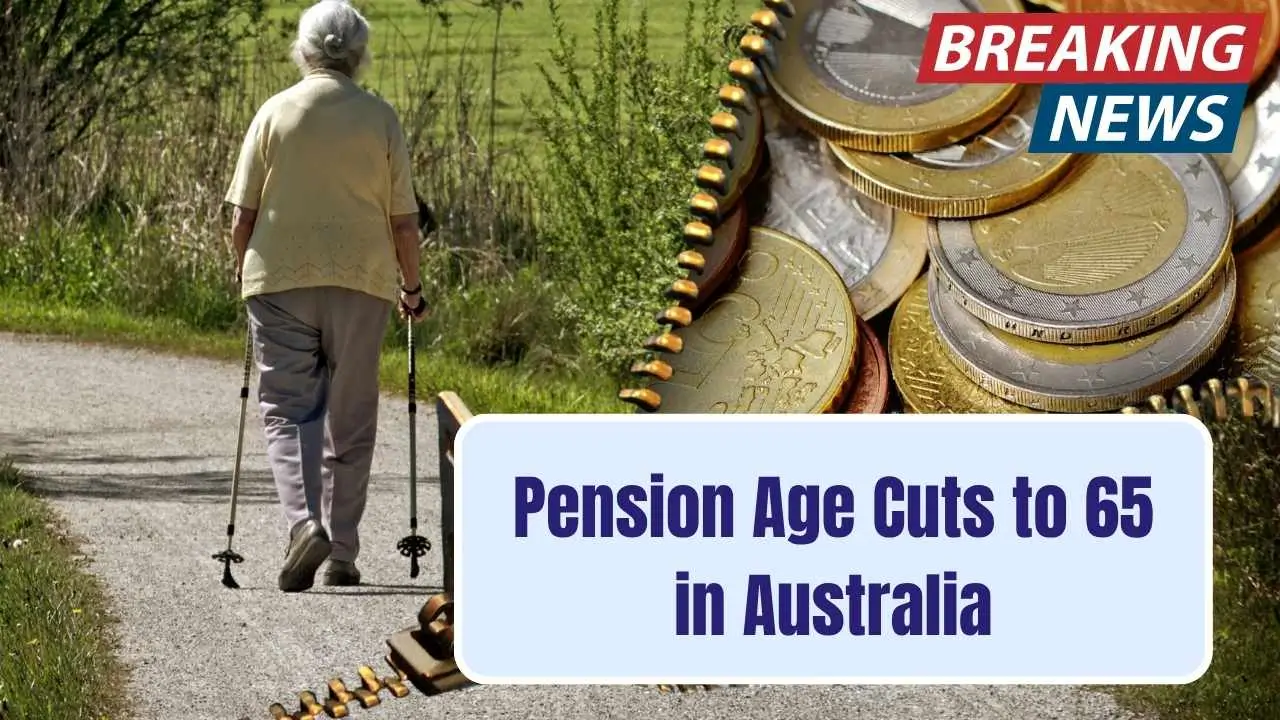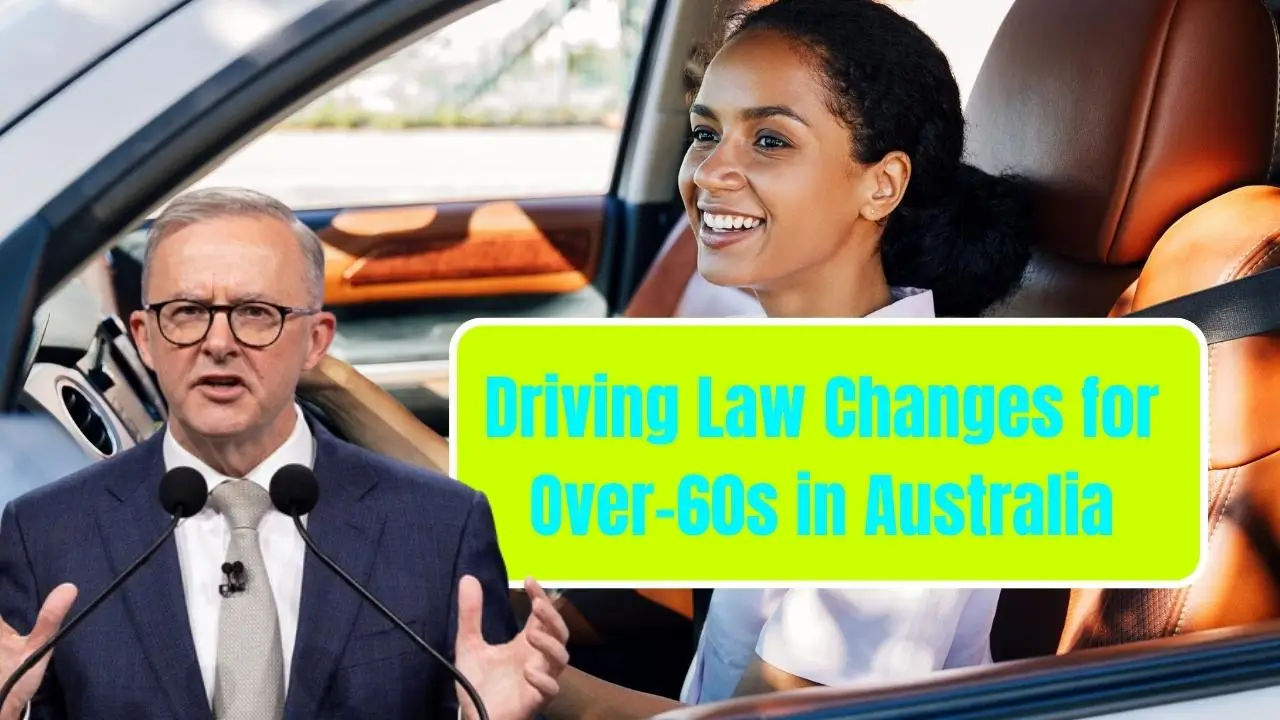From 1 October 2025, drivers in Australia will face a new $1,000 driving fine for serious traffic offences. The measure, introduced as part of a national road safety campaign, is intended to deter reckless behaviour on the roads and reduce fatalities. The changes also include the possibility of immediate licence suspension or cancellation in severe cases. Here is what Australians need to know about the Driving Fine.

Australia’s New $1,000 Driving Fine From Oct 1
| Key Fact | Detail |
|---|---|
| Start date | 1 October 2025 |
| Fine amount | Up to $1,000 |
| Target offences | Reckless speeding, signal violations, high-risk driving |
| Licence penalties | Suspension or cancellation in severe cases |
Why the New $1,000 Fine Has Been Introduced
Road safety remains a pressing issue in Australia. More than 1,200 people die on Australian roads every year, while tens of thousands suffer serious injuries. High-end speeding, red-light running, and reckless driving are consistently linked to a significant proportion of these incidents.
By setting the fine at $1,000, governments hope to create a deterrent powerful enough to alter driver behaviour. Authorities argue that current penalties have not been sufficient to reduce dangerous practices and that a clear, substantial financial penalty could have a stronger psychological effect.
Officials have said that road trauma costs the Australian economy billions annually and devastates families. The new penalties, advocates say, are aimed at both reducing fatalities and easing the broader social and economic burden caused by preventable crashes.
Offences That Will Attract the Fine
Serious Speeding Offences
The largest target of the new fine is excessive speeding. While all states already fine drivers for going above the limit, the October change focuses on high-range speeding — typically defined as driving 30 to 45 kilometres per hour above the limit, depending on the jurisdiction.
For example, a driver caught travelling 120 km/h in a 60 km/h zone could face the maximum $1,000 penalty under the new laws, in addition to demerit points and possible licence suspension.
Running Red Lights and Signal Violations
Running a red light at high speed is one of the most dangerous behaviours on Australian roads. From October, these offences will fall under the $1,000 penalty bracket. Crashes at intersections account for a large proportion of urban road deaths, making stricter penalties a priority.
Reckless and Dangerous Driving
Reckless behaviours such as tailgating, overtaking on blind corners, or driving dangerously in school zones are also included. These actions are considered deliberate choices that put other road users at extreme risk. Authorities emphasise that they will treat such conduct as severely as high-end speeding.
Licence Consequences Beyond the Fine
The new policy also allows for immediate suspension or cancellation of a driver’s licence in certain cases. Police officers may be empowered to suspend a licence on the spot if they deem the offence dangerous enough.
For example:
- A repeat offender caught speeding at extreme levels may lose their licence immediately.
- A motorist caught driving recklessly in a school zone could face both a fine and the loss of their licence.
Legal experts have cautioned that while this system may improve safety, it could raise concerns about discretion and fairness. Appeals processes are expected to be clarified in state-level legislation.
How the Fine Will Be Enforced
Cameras and Automated Systems
Many states are already rolling out advanced traffic monitoring systems. In Western Australia, smart cameras capable of detecting mobile phone use and seatbelt offences will begin issuing fines up to $1,000 in early October. These cameras had previously operated in “warning mode.”
Similar technologies are expected to spread nationwide, meaning enforcement may rely not only on police stops but also on AI-assisted detection.
Police Powers
Traditional enforcement through roadside policing will remain central. Officers will be tasked with identifying the most egregious cases and applying fines alongside demerit points or licence penalties.
Variations Across States and Territories
Because road laws are primarily a state and territory responsibility, implementation will vary. While the October 1 deadline sets a national framework, the exact offences, thresholds, and processes will differ:
- Western Australia: Smart cameras and immediate fines for phone and seatbelt offences are already scheduled.
- New South Wales: Authorities have flagged tougher rules for P-plate and young drivers.
- Victoria: Expected to align fines with national benchmarks but may set its own speed thresholds.
- Queensland and other states: Still in consultation phases, but likely to introduce similar penalty structures.
Arguments in Support
Road safety advocates and government officials broadly support the measure. They argue that:
- Deterrence is essential — A fine as high as $1,000 may be enough to stop many from considering risky behaviour.
- Consistency matters — A standard penalty across states will reduce confusion for drivers travelling interstate.
- Lives are at stake — The economic and emotional toll of road trauma justifies harsh measures.
Some road safety researchers have long argued for stronger enforcement. They note that without serious penalties, Australia will continue to see the same tragic numbers on its roads.
Criticisms and Concerns
Not all stakeholders agree. Critics raise several concerns:
- Disproportionate impact on low-income drivers: A $1,000 fine represents a far heavier burden for poorer households than for wealthier drivers.
- Consistency across jurisdictions: With states responsible for implementation, differences in thresholds could lead to confusion.
- Fairness of camera-based enforcement: Automated systems have been criticised for not taking context into account, such as emergencies.
Civil liberties groups have also called for transparency in how discretionary powers to suspend licences will be applied.
International Comparisons
Australia is not alone in introducing harsher road penalties.
- In the United Kingdom, high-range speeding can result in fines of up to £1,000 and a driving ban.
- New Zealand has been experimenting with tiered fines and mandatory courses for repeat offenders.
- Several European Union countries, including France and Germany, apply fines proportionate to income, ensuring penalties impact all socioeconomic groups equally.
Some Australian commentators have suggested that proportional fines could be considered in the future to address fairness concerns.
What Drivers Should Do Now
- Stay informed — Check your state’s transport authority website for specific rules.
- Adopt safe habits — Avoid any conduct that could be classified as dangerous or reckless.
- Budget awareness — Understand the financial and licence consequences if caught.
- Vehicle maintenance — Ensure cars meet safety standards; compounding offences could add further penalties.
Major Driving Law Shakeup for Over-70s in Australia – What Changes from October 2025
New Driving Law Changes for Retirees 60+ in Australia – Medical Tests Now Mandatory
Looking Ahead
From 1 October 2025, Australia enters a new era of road enforcement. While the $1,000 fine is the headline measure, the broader policy shift is towards stricter regulation, advanced monitoring technology, and harsher penalties for unsafe driving.
Authorities hope the changes will lead to fewer deaths and injuries on the roads. The coming months will reveal whether the new penalties achieve the desired effect — or whether they will spark debate about fairness, enforcement, and proportionality.
















